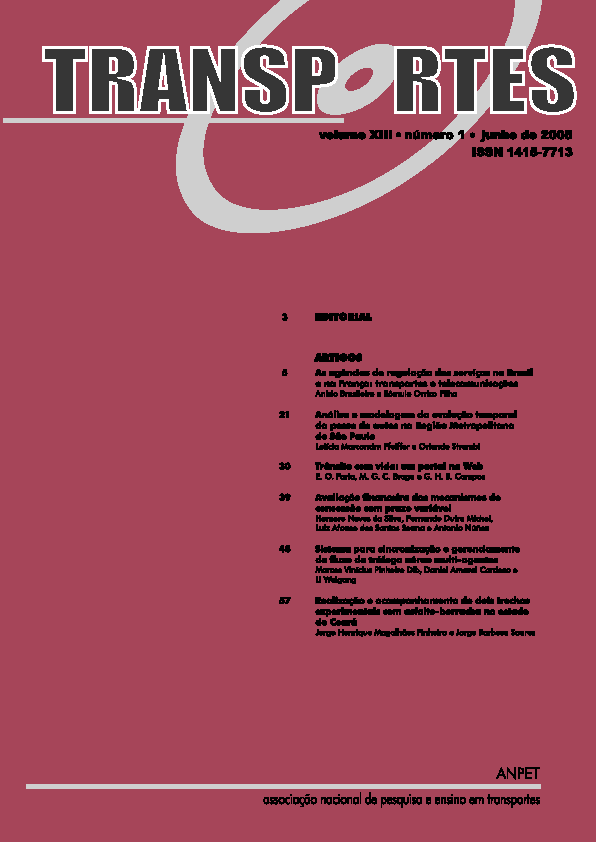Sistema para sincronização e gerenciamento de fluxo de tráfego aéreo multi-agentes
DOI:
https://doi.org/10.14295/transportes.v13i1.91Abstract
Nesta pesquisa propõe-se um sistema para sincronização e gerenciamento de fluxo de tráfego aéreo que combina tecnologias de Inteligência Artificial – coordenação de Multi-Agentes, e computação distribuída sobre a Internet – Grid Computacional – cuja finalidade é otimizar o fluxo de tráfego aéreo, prevendo congestionamentos e racionalizando a utilização dos recursos dos aeroportos, sem contudo, ferir os princípios de segurança estabelecidos para a área de transportes aéreos. Para demonstrar o sistema desenvolvido, são descritos sua arquitetura, seus componentes e os relacionamentos entre eles, bem como os mecanismos de negociação necessários às tomadas de decisão. A título ilustrativo, é relatado um estudo de caso de planejamento tático, simulado a partir de informações do Aeroporto Internacional de São Paulo. A combinação das duas tecnologias, coordenação de Multi-Agentes e Grid Computacional, aplicada ao problema de gerenciamento do fluxo de tráfego aéreo apresenta perspectivas de tornar-se um tópico promissor para pesquisas futuras.
Downloads
Downloads
Published
How to Cite
Issue
Section
License
Authors who submit papers for publication by TRANSPORTES agree to the following terms:
- The authors retain the copyright and grant Transportes the right of first publication of the manuscript, without any financial charge, and waive any other remuneration for its publication by ANPET.
- Upon publication by Transportes, the manuscript is automatically licensed under the Creative Commons License CC BY 4.0 license. This license permits the work to be shared with proper attribution to the authors and its original publication in this journal, and to be adapted for non-commercial purposes, provided appropriate credit is given and any derivative works are distributed under the same terms.
- Authors are authorized to enter into additional separate contracts for the non-exclusive distribution of the version of the manuscript published in this journal (e.g., publishing in an institutional repository or as a book chapter), with recognition of the initial publication in this journal, provided that such a contract does not imply an endorsement of the content of the manuscript or the new medium by ANPET.
- Authors are permitted and encouraged to publish and distribute their work online (e.g., in institutional repositories or on their personal websites) after the editorial process is complete. As Transportes provides open access to all published issues, authors are encouraged to use links to the DOI of their article in these cases.
- Authors guarantee that they have obtained the necessary authorization from their employers for the transfer of rights under this agreement, if these employers hold any copyright over the manuscript. Additionally, authors assume all responsibility for any copyright infringements by these employers, releasing ANPET and Transportes from any responsibility in this regard.
- Authors assume full responsibility for the content of the manuscript, including the necessary and appropriate authorizations for the disclosure of collected data and obtained results, releasing ANPET and Transportes from any responsibility in this regard.









